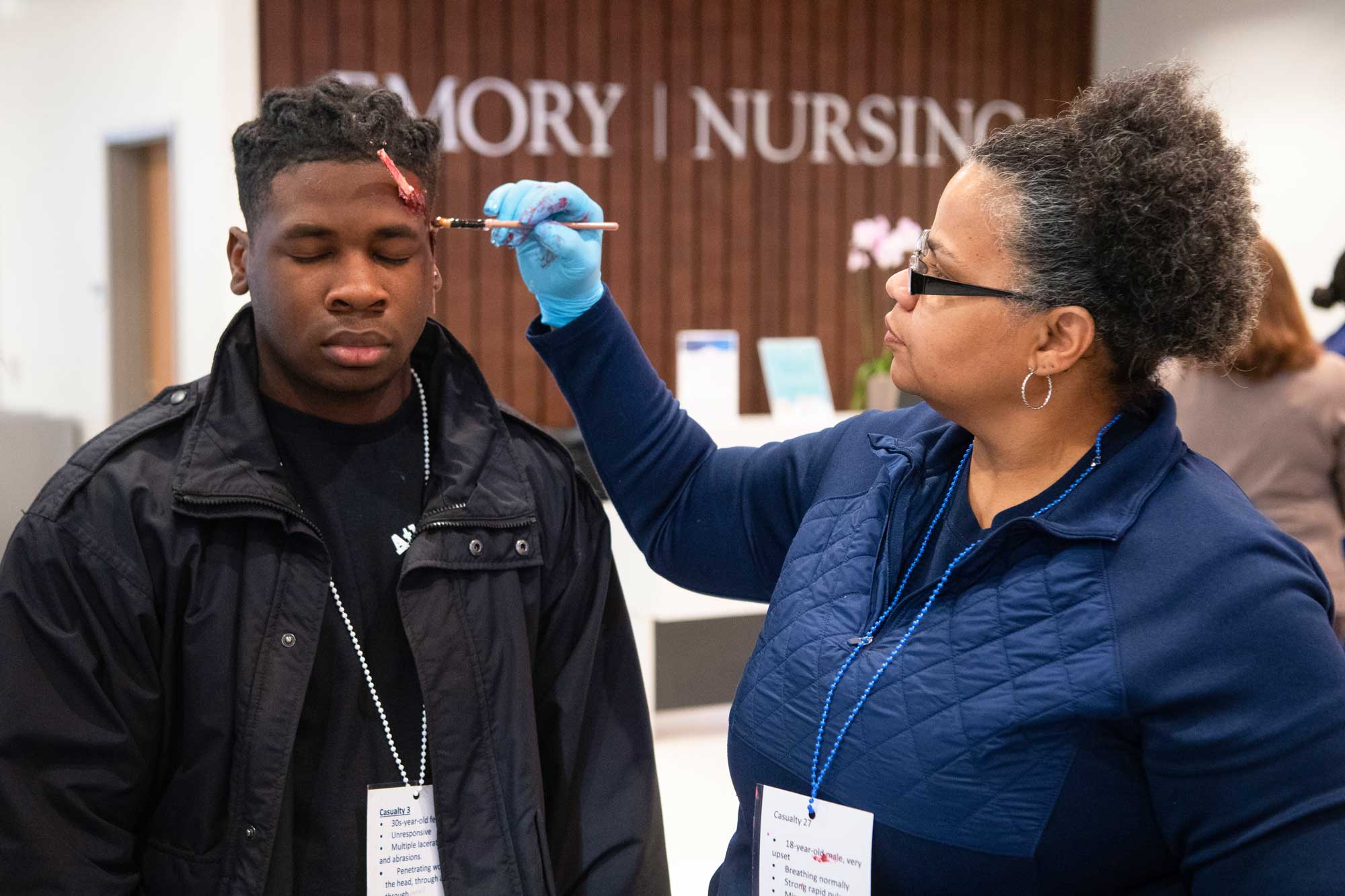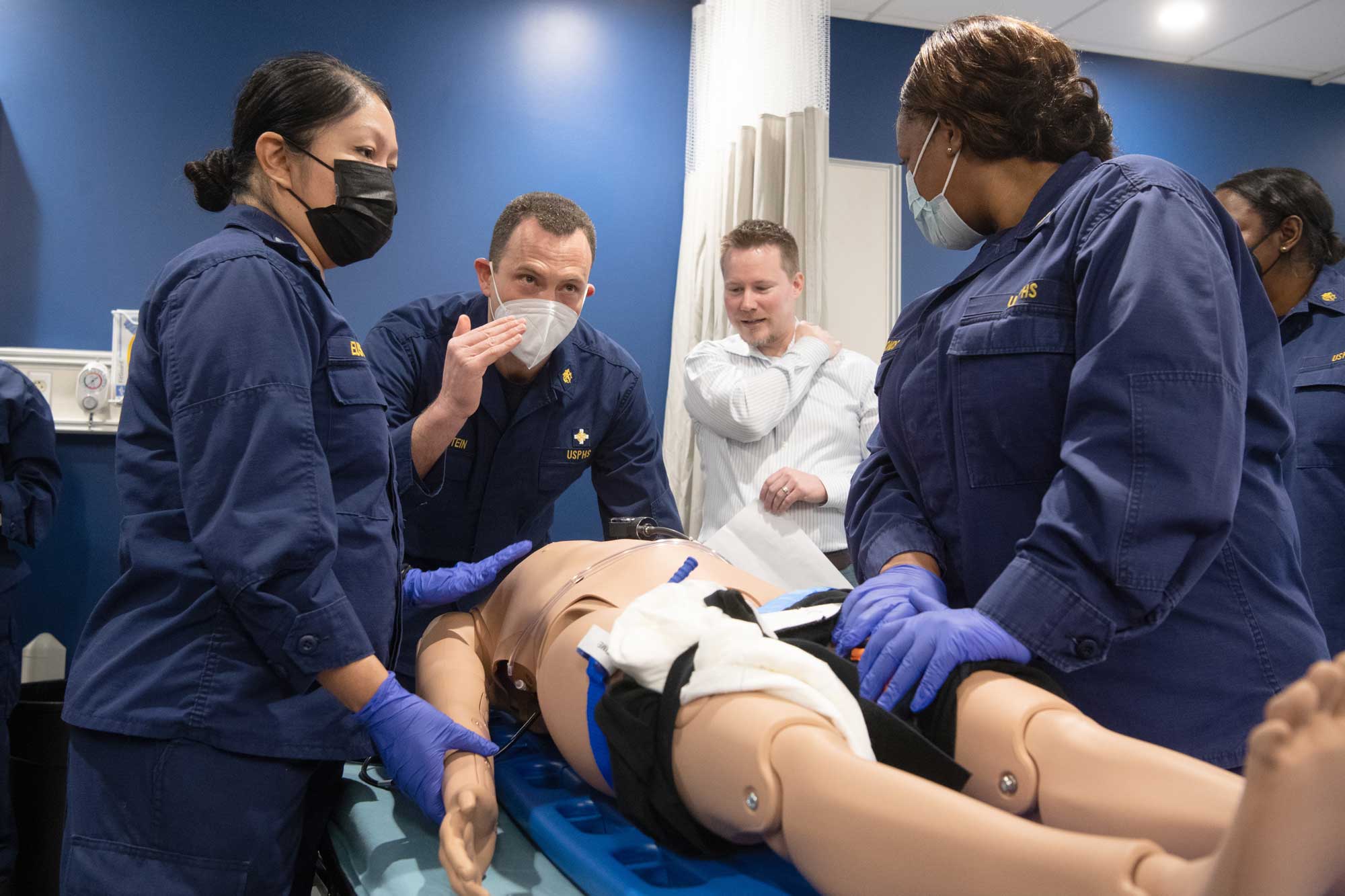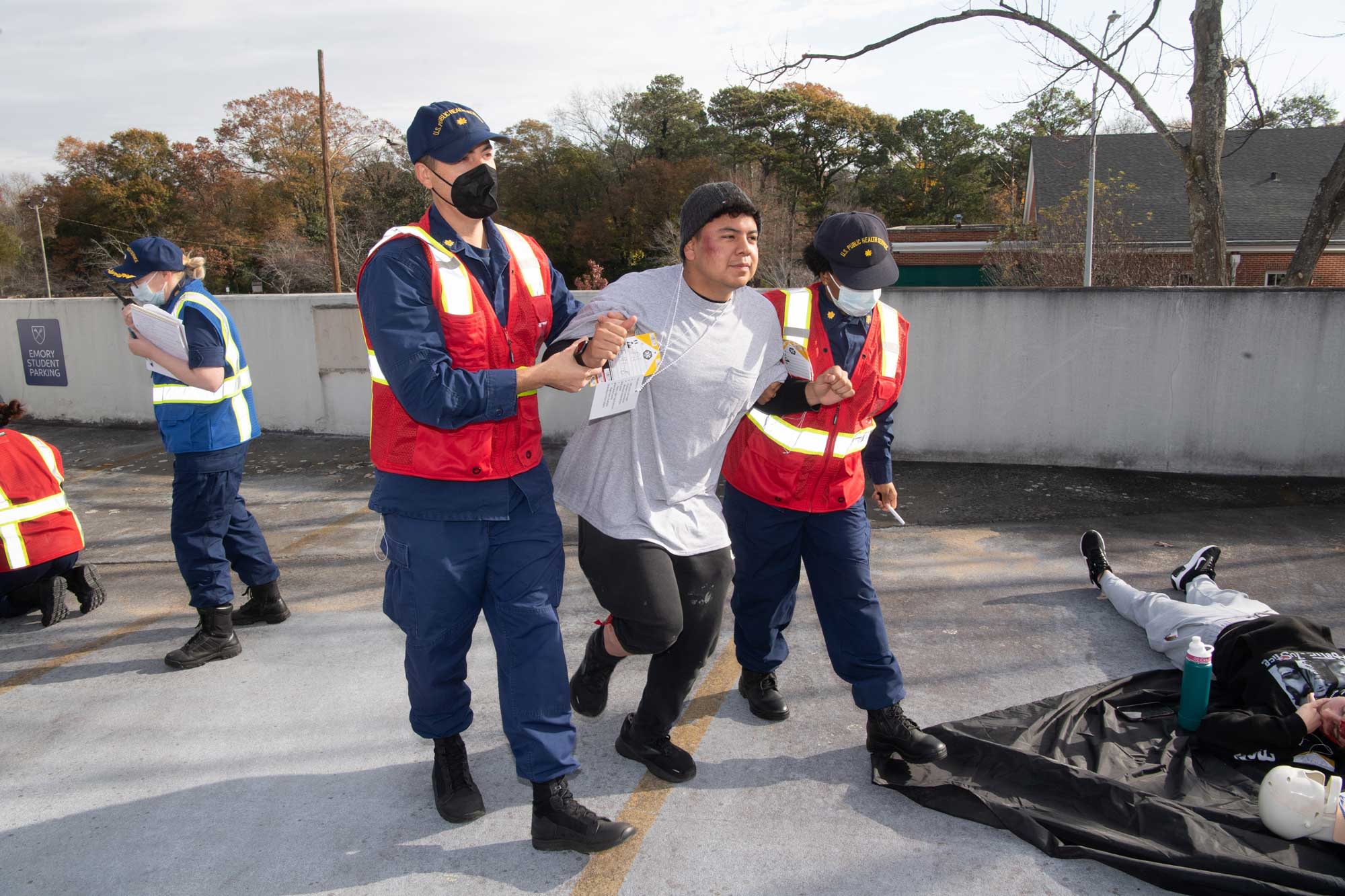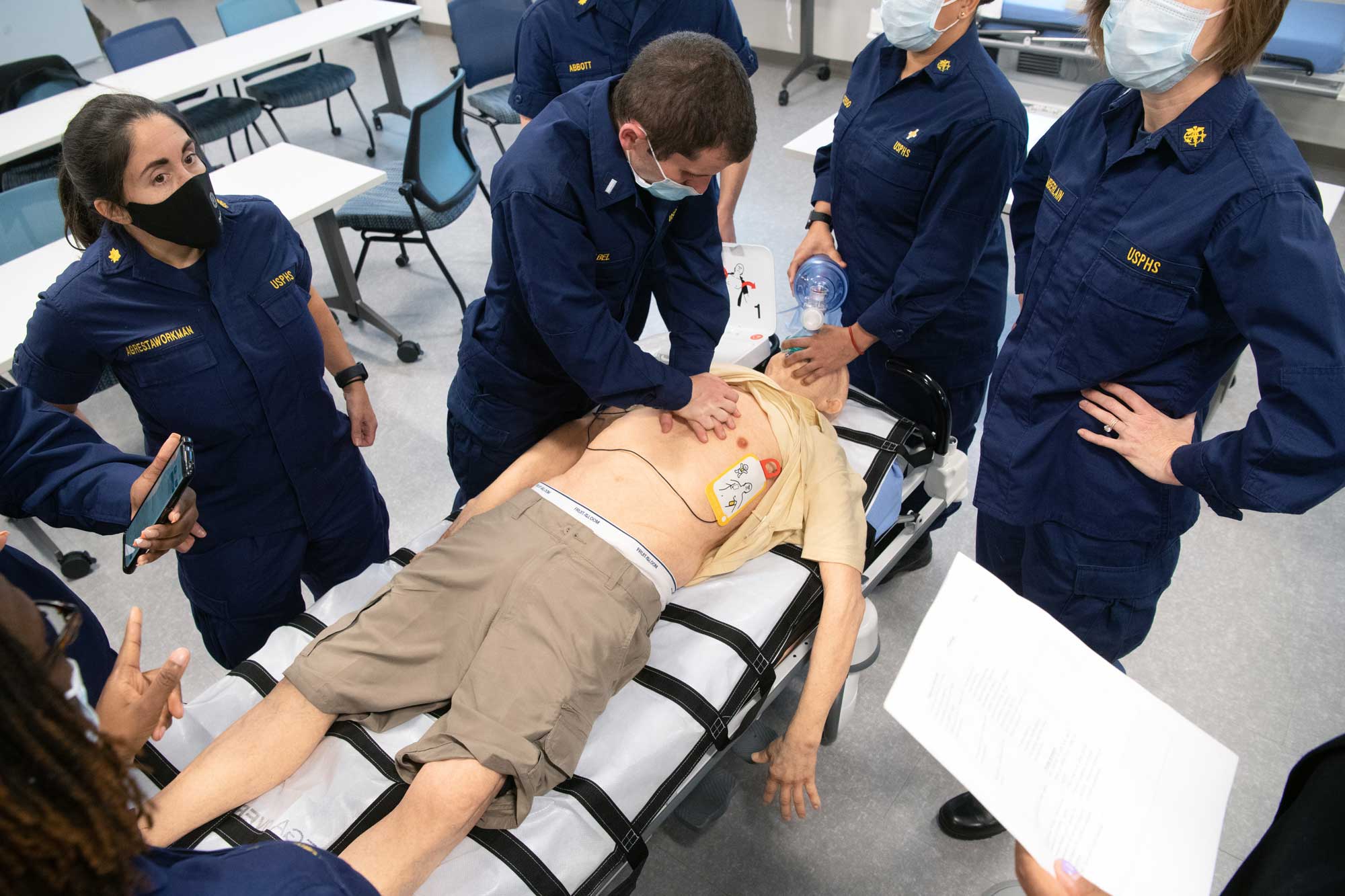Disaster Artists
The Emory Nursing Learning Center plays a key role in U.S. Public Health Service emergency preparedness training





An instructor leads a psycho-motor training exercise.
An instructor leads a psycho-motor training exercise.

U.S. Public Health Service officers practice triaging the wounded based on the severity of their injuries.
U.S. Public Health Service officers practice triaging the wounded based on the severity of their injuries.

USPHS officers conduct an exercise during the training, which involved hundreds from across the country.
USPHS officers conduct an exercise during the training, which involved hundreds from across the country.
In the span of a few weeks last year, the Emory Nursing Learning Center went from a construction zone to a disaster zone.
During four two-day sessions just weeks after the learning center opened, hundreds of U.S. Public Health Service (USPHS) officers from across the country gathered in Decatur for emergency drills designed by Emory’s Office of Critical Event Preparedness and Response (CEPAR) in partnership with the USPHS and the School of Nursing.
In the most dramatic exercise — the mass casualty drill — the terrace-level parking deck was turned into a scene of pain and chaos meant to resemble a partial building collapse caused by a hurricane. Volunteer students made up with faux blood and wounds depicted a range of casualties, from lacerations and missing limbs to cardiac arrest and death.
“The goal is to make it realistic enough that it gets everyone’s pulse up,” says Sam Shartar, MSN, RN, NRP, CEN, FAAN, senior director of operations for CEPAR.
Since its creation 15 years ago, CEPAR has led training drills for emergency responders across Georgia.
The simulations at the learning center were the culmination of a yearlong refresher course for commissioned public health officers that began with online classes in 23 subjects such as IV therapy, airway management, common OB/GYN emergencies, and Introduction to Mass Casualty and Emergency Triage. More than 600 officers — physicians, nurses, nurse practitioners, and physician assistants — enrolled.
In the mass casualty drill, the officers were divided into groups of 12 to practice triage by sorting casualties into several categories of medical need.
“Triage is extremely stressful,” Shartar says. “You have very little data and a short time in which to make Solomon-like decisions for the greatest good for the greatest number of people.”
These sessions — and the lessons learned — are vital to enhancing clinicians’ readiness to deploy during disasters, public health emergencies, and humanitarian assistance missions.
